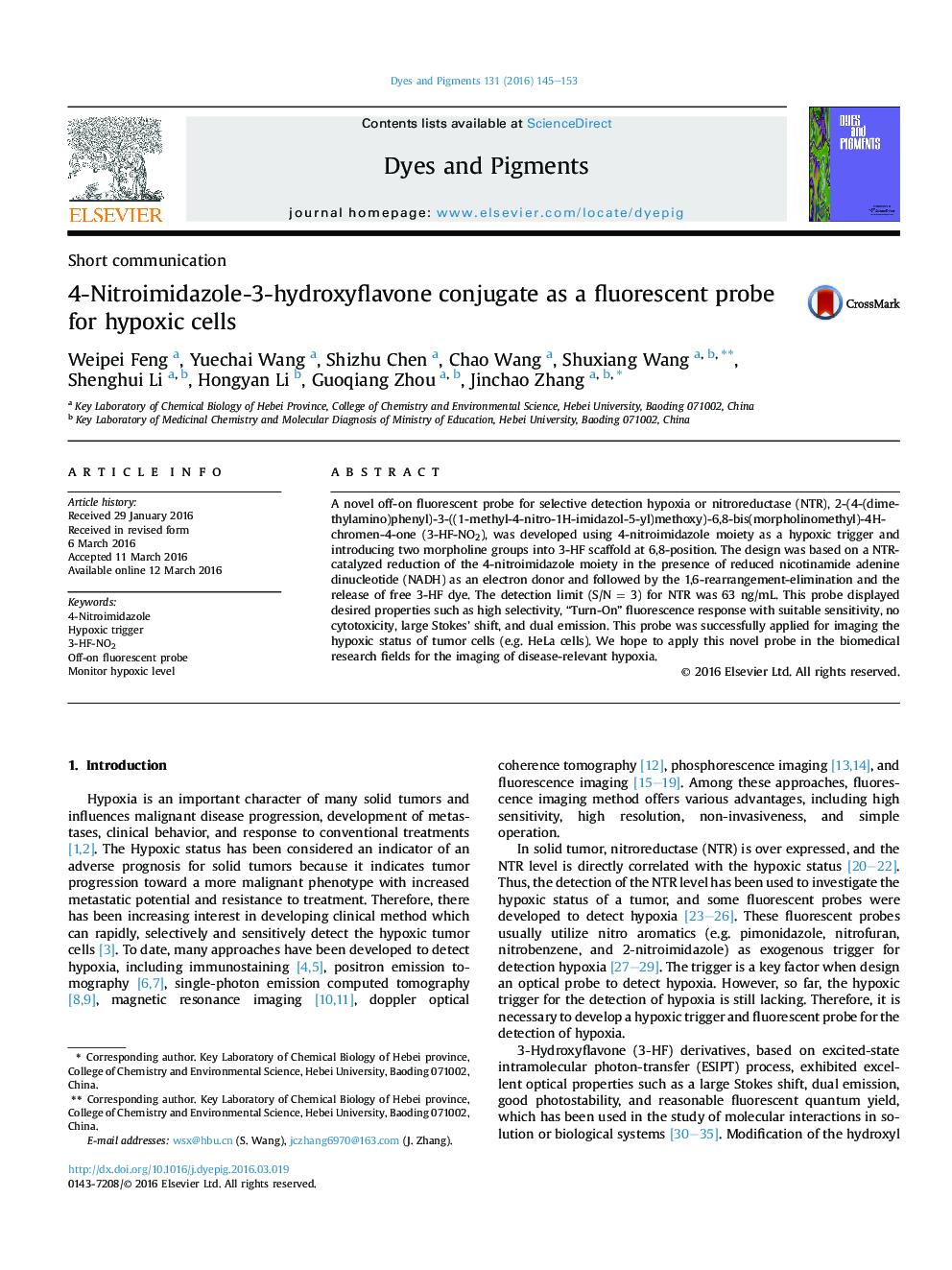| Article ID | Journal | Published Year | Pages | File Type |
|---|---|---|---|---|
| 175285 | Dyes and Pigments | 2016 | 9 Pages |
•4-Nitroimidazole moiety is an efficient hypoxic trigger.•A novel probe 3-HF-NO2 for the selective detection hypoxia or NTR was developed.•3-HF-NO2 showed excellent selectivity, sensitivity, and low detection limit.•3-HF-NO2 was successfully used for monitoring hypoxic status in HeLa cells.
A novel off-on fluorescent probe for selective detection hypoxia or nitroreductase (NTR), 2-(4-(dimethylamino)phenyl)-3-((1-methyl-4-nitro-1H-imidazol-5-yl)methoxy)-6,8-bis(morpholinomethyl)-4H-chromen-4-one (3-HF-NO2), was developed using 4-nitroimidazole moiety as a hypoxic trigger and introducing two morpholine groups into 3-HF scaffold at 6,8-position. The design was based on a NTR-catalyzed reduction of the 4-nitroimidazole moiety in the presence of reduced nicotinamide adenine dinucleotide (NADH) as an electron donor and followed by the 1,6-rearrangement-elimination and the release of free 3-HF dye. The detection limit (S/N = 3) for NTR was 63 ng/mL. This probe displayed desired properties such as high selectivity, “Turn-On” fluorescence response with suitable sensitivity, no cytotoxicity, large Stokes’ shift, and dual emission. This probe was successfully applied for imaging the hypoxic status of tumor cells (e.g. HeLa cells). We hope to apply this novel probe in the biomedical research fields for the imaging of disease-relevant hypoxia.
Graphical abstractFigure optionsDownload full-size imageDownload as PowerPoint slide
